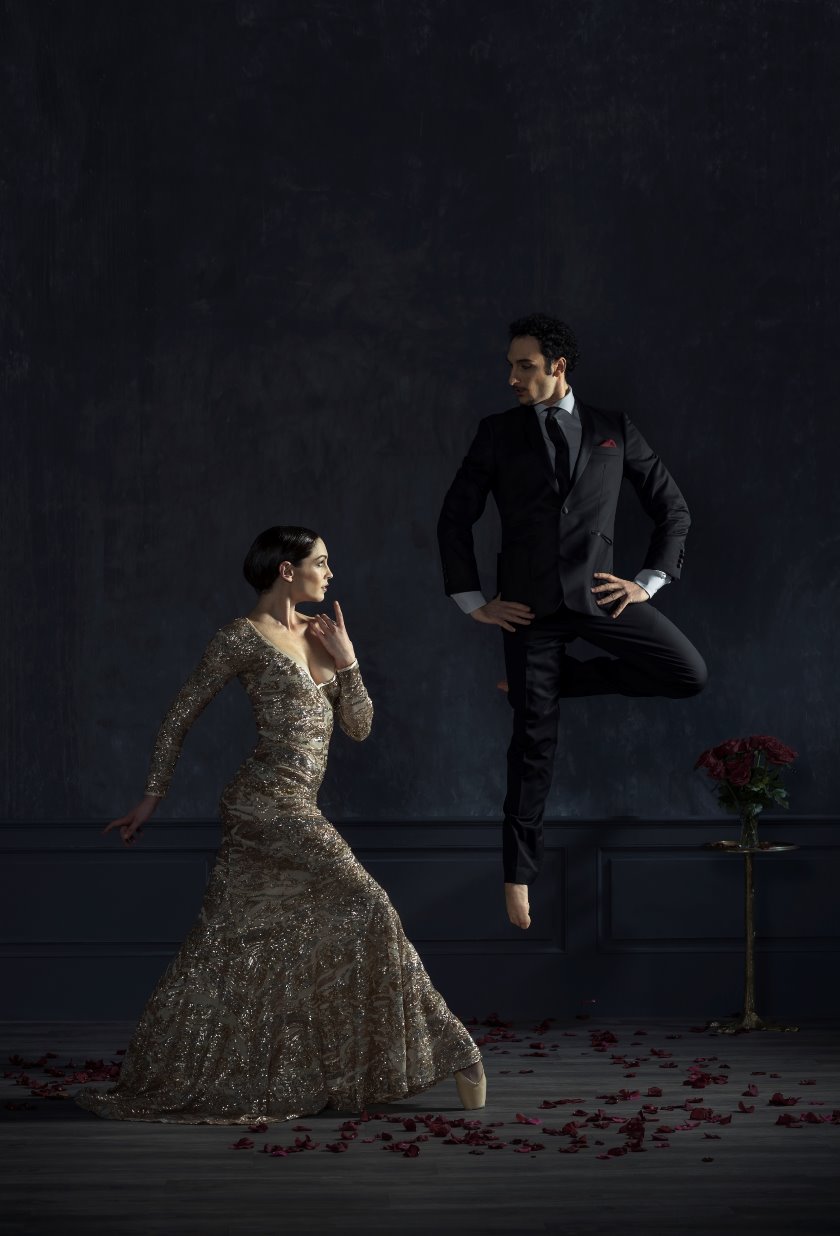

Remember the MTV Unplugged series? It was a huge hit, as fans got to hear their favourite musicians without big bands and arrangements: it was their voices with maybe a single instrument each. The Royal New Zealand Ballet’s Lightscapes, in association with Ryman Healthcare, takes a similar approach with its four ballets, including a special commission from Moss Te Ururangi Patterson, Te Ao Mārama. The company also celebrates its 70th anniversary.
Starting with familiar territory, George Balanchine’s Serenade opened the evening with the fluidity expected from this ballet, staged by Rebecca Metzger. The Tchaikovsky score (recorded, not performed live), the Karinska costumes, and the classical techniques are present, and as a plotless ballet—though as observers you see subtexts. Twenty-five dancers performed this version, with the initial group of 16 in blue dresses, standing against a blue background. From this point you knew you were in for a night showcasing raw talent, bringing you closer to the grit and energy of ballet.
And we weren’t disappointed as Serenade showcased both order and chaos, with difficult moves for the dancers. Mayu Tanigaito had the challenging role as the Russian Girl and once again it is testament to her skills that she carried off this role with aplomb. Kihiro Kusukami has a bright future ahead in the company as evidenced in this ballet and a later one. Matthew Slattery, with Kate Kadow as Waltz Girl, also stood out in Serenade, as did Sara Garbowski, all of whom executed some of the tougher moves.




The real highlight in the first half for us was Te Ao Mārama, especially commissioned by the Royal New Zealand Ballet and drawing from Te Ao Māori. Opening with a waiata by Ariana Tikao, whose voice you could listen to for an age, and joined by Shayne Carter on electric guitar for the rest of the James Webster score, Te Ao Mārama continued the raw theme of the evening.
Moss Te Ururangi Patterson told a story about the raising of consciousness, connecting to Māori legend about the origins of the universe. Beginning with a lone male dancer, the floor was soon joined by 14 others, as Patterson revealed the primordial periods of time in Te Ao Māori: Te Kore, or the nothingness; Te Po, the nights of seeking and contemplation; and Te Ao Mārama, when the world of light emerged. Conventional science might call that moment the Big Bang; Patterson equates light with consciousness as related concepts.
Lighting effects highlighted the light and dark, words such as ‘tihei mauri ora’ (‘my life force is alive’) appeared on the screen behind. The dancers’ breaths were used to effect, since ha (breath) is considered to have come from the gods themselves. Layered bare arms gave an otherworldly effect. The ballet built up to a powerful yet still balletic haka. This was a moving performance that connected to the roots of its home country and brought Te Ao Māori to a wider audience.




Annabelle López Ochoa’s Requiem for a Rose is a beautiful, romantic ballet, beginning with a single dancer holding a rose in her mouth. Kirby Selchow had us transfixed as Venus, while Tatyana van Walsum’s bright billowing red skirts—worn by male and female dancers alike—brought a bouquet of roses to life.
The romantic Franz Schubert score, namely ‘String Quintet in C Major D.956’ and ‘Movement Adagio’, is a perfect match. As screens dropped on each side—there’s that raw motif again—the bare stage and lighting rigs are revealed, perhaps showing that roses can be a cliché. However, at the core, Venus remains as a symbol of real love. This is an innovative ballet which requires exceptional strength from its dancers, as they support each other in numerous pas de deux.





The final ballet, Alice Topp’s Logos, looks at the pressures and stresses of life, and how our best armour is hope and love. Jon Buswell’s sets help tell the story. Topp’s choreography shows a raw emotion as dancers express their stresses and, ultimately, relief; Buswell uses walls and mirrors to good effect. But it’s in the final movement, where Topo wants her final two dancers to experience life free from stress, where performers, choreographer and set designer shine.
Buswell’s back wall falls forward, bringing with it a cloud of dry ice, just behind Ana Gallardo Lobaina and Matthew Slattery. The Ludovico Einaudi score felt expansive, especially after the walls fell. Water begins raining lightly on to the stage and Gallardo Lobaina and Slattery perform a beautiful final pas de deux among it; it is a touching conclusion where Topp has told her story of confinement leading to freedom. In fact, this was one of Lobaina’s and Slattery’s best, while in two of the ballets Kusukami is very much a dancer to look out for.
It was a pleasant surprise to see the effects—this was an excellent finalé—but once again it is the dancers that really shine. Lightscapes is the RNZB performance that shows their skills in a natural, unadorned fashion, and you leave the evening admiring them more than ever.
Jack Yan is founder and publisher of Lucire.









